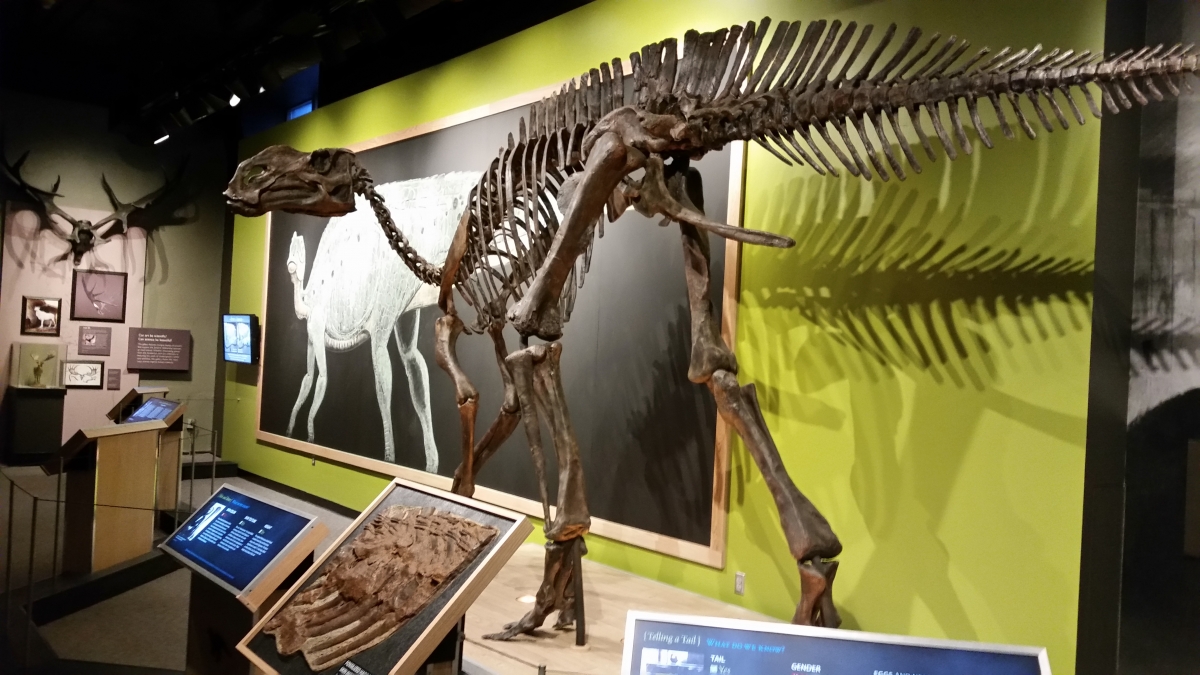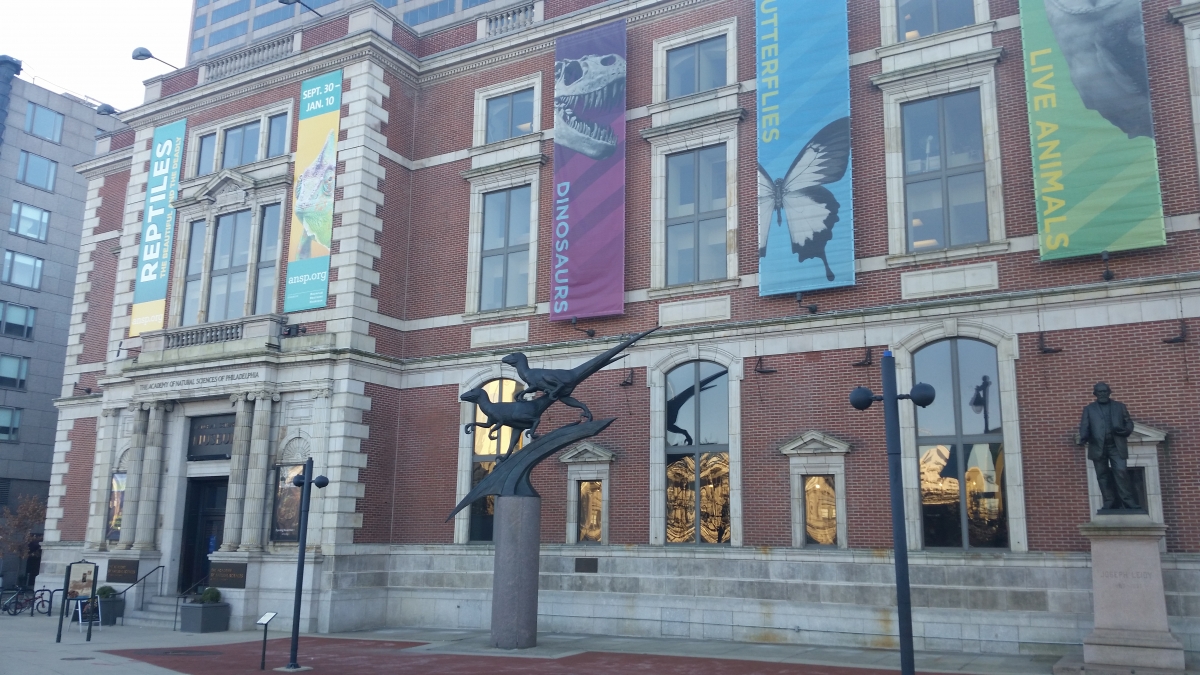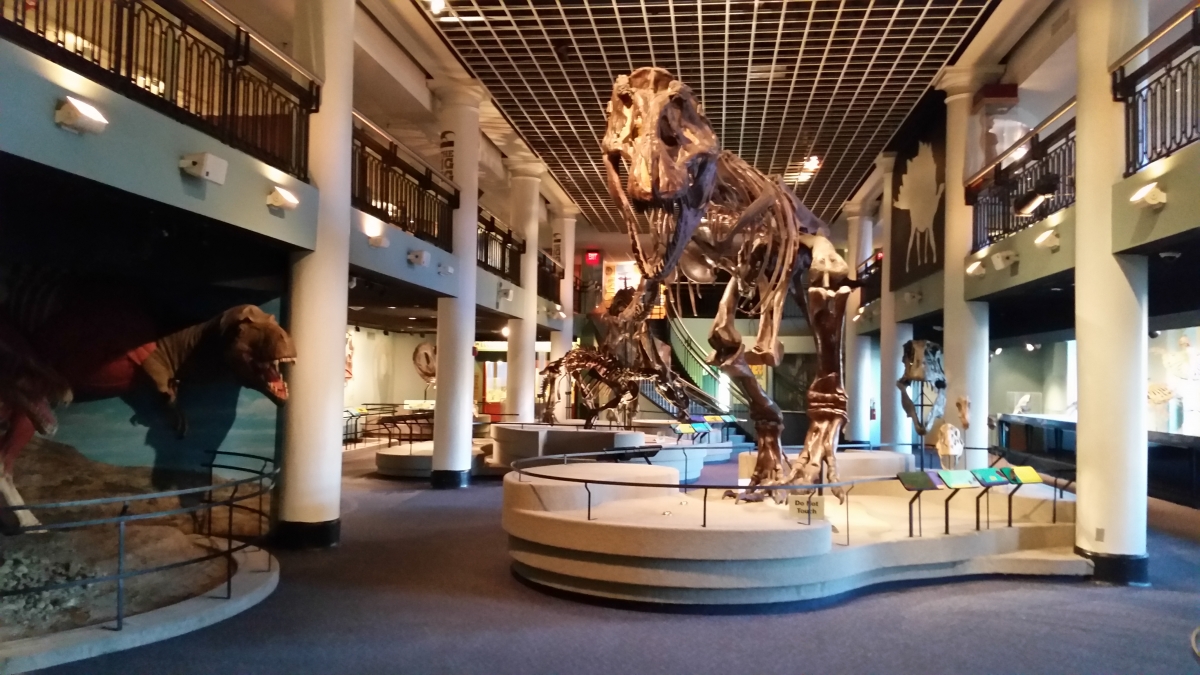Related Post
-
Buy Tickets for The Constitutional Walking Tour of Philadelphia - See 20+ Sites on a Primary Overview of Independence Park, including the Liberty Bell and Independence Hall
The oldest natural science research institution and museum in the New World.
The History
As the largest city in the American Colonies and the home of Benjamin Franklin, Philadelphia had become a center of American scholarly thought by the late 18th century. Franklin created institutions such as the Library Company of Philadelphia, The University of Pennsylvania and the American Philosophical Society and attracted brilliant early American thinkers such George Washington, John Adams, Thomas Jefferson, James Madison and Alexander Hamilton as members. As Philadelphia’s scholarly community grew larger and more sophisticated the desire grew to create more specialized institutions. While the American Philosophical Society had been a pioneer in the field of American Natural History, the Society also catered to unrelated fields such as political science and medicine. Desiring an organization entirely dedicated to natural sciences, in 1812 a group of Philadelphian Naturalists created the Academy of Natural Sciences, an institution created “for the encouragement and cultivation of the sciences, and the advancement of useful learning.” Initially located in a building near the intersection of 3rd and Market Streets, it was the first natural sciences institution in the new world.
In its first decades the collection of the Academy grew quickly as explorers across America provided the Academy with evidence of new species of plants and animals as they explored America’s new frontier. Members of the Academy also corresponded with respected naturalists from around the globe, including Thomas Jefferson. Unlike other early American collections of fossils and taxidermied animals, the collection of the Academy was not presented as mysterious oddities, but rather as a highly scientific collection, ordered and labeled in Latin and Greek with the design of educating its visitors as much as entertaining them.

The Academy opened its doors to the public for the first time in 1828 and quickly became a sensation. At this point no one really knew what a dinosaur looked like and many even doubted their existence. But then in 1858, an amateur scientist named William Parker Foulke found a nearly complete fossilized dinosaur skeleton. Foulke lived in town just East of Philadelphia in Haddonfield, New Jersey and notified his friend Joseph Leidy of the discovery. Leidy worked at the Academy of Natural Sciences and along with a coworker, Benjamin Waterhouse Hawkins, excavated a total of 49 bones. Leidy and Hawkins used their extensive knowledge of animal anatomy to reassemble the skeleton and created models to fill in the missing pieces. They dubbed the dinosaur the Hadrosaurus and displayed the dinosaur to the public. It was the first mounted dinosaur skeleton ever to be displayed in the world and it was a huge hit. Over 100,000 people came to the Academy to see “Haddy” and came to understand the history of our natural world like man never had before.
Due to the immense popularity of their exhibits, the Academy outgrew their building three times before finally settling into their current home in 1876. Located at 19th Street and the Benjamin Franklin Parkway, the Academy currently sits in the heart of Philadelphia’s cultural district. In 2011 the museum became affiliated with Drexel University and changed its name to the Academy of Natural Sciences of Drexel University.

What to See
The collection at the Academy is beyond impressive; as the first place in the world where you could go to see dinosaur fossils, it’s understandable that the Academy has by this time accumulated a significant collection. All told, over 18 million specimens are contained within the Academy’s collection. One of the most beloved ways to discover the Academy’s collection is through its many dioramas. There are 37 different dioramas at the Academy most dating back to the 1930’s and 1950’s. These incredibly detailed displays are a strange combination of art and science that have delighted visitors for decades. At their best, these lifelike dioramas are able to transport you to another place, to see wildlife up close and in its natural habitat.
Another popular attraction is Dinosaur Hall. In Dinosaur Hall you can see over 30 species of dinosaurs. Including a massive 42 foot long cast of a Tyrannosaurus rex that greets visitors as they enter the museum. In addition to the skeletons, visitors can view dinosaur eggs, footprints, sculptures, murals, paleontologist tools, and a life size model of a Stegosaurus. You can even participate in a green-screen video where you will be projected into a world full of dinosaurs.
Perhaps the most beautiful part of the Academy is a lush tropical garden filled with colorful plants and filled with dozens of butterflies from across the world. Butterflies are sent to the Academy from across the world every week and because butterflies have such a short life span, the types of butterflies on exhibit are constantly changing. These colorful creatures will fly all around you as you enjoy the beauty of the tropical garden.

Insider Tips
While the Academy is best known for its dinosaur specimens that have long since died, there are on occasion living creatures on display within the Academy. Come January 30th, 2016 the Academy will be crawling with live specimens… literally. On that day the exhibit “Tarantulas: Alive and Up Close”” will open to the public. At the exhibit you’ll learn about this fascinatingly diverse animal and how some species of Tarantulas can live in a rain forest while others live in a desert and how some enjoy life in the treetops, while others live underground.
During the exhibit you’ll learn how tarantulas have impacted human medicine and have the opportunity to explore a tarantula burrow. You’ll get a chance to see live feedings of the tarantulas and even learn why they’re so hairy! The exhibit will run until May 30th but there will be special events planned for opening weekend on January 30 -31 so be sure to check it out as soon as you can!
How to Get There
The Academy of Natural Sciences is located on the Benjamin Franklin Parkway in Center City Philadelphia and can be easily reached in a number of ways. The Academy is located right next to Interstate 676 making it easy to reach by car and several nearby parking garages provide ample space to park.
Guests of The Constitutional Walking Tour will find that the Academy is a walkable distance from the National Constitution Center where all of our tours both begin and end. To walk to the Academy from the National Constitution Center, make a right onto Arch Street and keep heading west until you reach the Benjamin Franklin Parkway. Make a right on the Benjamin Franklin Parkway and the Academy of Natural Sciences will be on your left as you approach Logan Square. You can also take public transit to reach the Academy, the nearest train station is Suburban Station. which is only a few minutes away and multiple bus lines have stops within a block of the Academy.
Hours
Monday – Friday: 10:00am – 4:30pm
Weekends and Holidays: 10:00am – 5:00pm
(Note: These hours are subject to change, contact the Academy of Natural Sciences to confirm)
Additional Information
1900 Benjamin Franklin Parkway
Philadelphia, Pa 19103
215.299.1000



